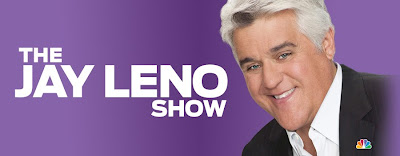
Friday, December 11, 2009
The Blogging Experience

Friday, December 4, 2009
The Axe Effect
Thirteen as the Stereotypical Lesbian
Friday, November 27, 2009
Thanksgiving Stereotypes

Friday, November 20, 2009
Click-Through Activism With Real World Results

Friday, November 6, 2009
Mocking "Click-Through Activism"

After reading the Washington Post article about "Click-through Activism," I was curious to find out what types of groups were currently popular on Facebook, and what kinds of causes they supported. In the process of browsing groups, I came across a group that mocks this "Click-through Activism" that is so common on Facebook.
Something Must Be Done About This!"
Tuesday, November 3, 2009
What Kind of Tech User am I?
Here are the results of my tech user quiz from PewInternet.org :
You are an Media Mover
"If you are a Media Mover, you have a wide range of online and mobile habits, and you are bound to find or create an information nugget, such as a digital photo, and pass it on. These social exchanges are central to your use of information and communication technology. Cyberspace, as a path to personal productivity or an outlet for creativity, is less important to you.
Overall, this result is quite accurate. I do have a wide range of online and mobile habits and I do tend to use technology and cyberspace primarily for social purposes. While I of course use cyberspace and the Internet for academic purposes, I feel media/technology/cyberspace is often more of a distraction than a creative aid. Cyberspace as a "path to personal productivity" is virtually nonexistent in my life. In fact, while I enjoy using cyberspace, I feel that it actually takes away from my productivity.
Friday, October 23, 2009
GLOCAL SCENE
 Glocal Scene is a documentary by Chestnut Productions about global local music scenes. The film makers, two men from Leeds, travel to seven different countries, from South Africa to the United States, find and interview local musicians, and hear their music.
Glocal Scene is a documentary by Chestnut Productions about global local music scenes. The film makers, two men from Leeds, travel to seven different countries, from South Africa to the United States, find and interview local musicians, and hear their music.
Friday, October 16, 2009
George Lopez: The Kind of Change Obama Can Believe In
Here's the George Lopez commercial with President Obama that I mentioned during today's discussion.
In class, we talked a lot about the significance of appearances in the media, especially in the context of political campaigns. We focused on Nixon and Kennedy and the first televised debate, and on McCain and Obama. Both examples reinforce the importance of appearances, and the value that the American public puts on appearances. In both cases, the young, charismatic, attractive candidate came out on top, and although their appearances were not the only reasons for their successful campaigns, they most certainly played a role.
This commercial is a prime example President Obama trying to keep up his appearance in the media, well after his campaign and well into his first term as president. In the commercial, President Obama endorses George Lopez's new late night show on TBS, calling it, "The kind of change I can believe in." My gut reaction to this was that it was somewhat inappropriate to use his profound campaign slogan of "change," a slogan that holds so much significance to so many people, in reference to a late night television show. I understand that President Obama is trying to maintain his down to earth, accessible image, but at a certain point I think people begin to wonder where his priorities lie. The comments on the YouTube video certainly enforce this criticism. Many of them sarcastically comment that Obama is clearly working hard for our country.
Overall, with appearances in commercials like this, Obama, and any politician for that matter, runs the risk of coming across as too concerned with his/her appearance in the media and not concerned enough with important political issues. I am by no means against the president making an effort to be relatable to the everyday American, but I am frankly a little disappointed, and even embarrassed by Obama's choice of words in this particular commercial.
Friday, October 2, 2009
The Death of the Album

As we talked about in class today, virtually no one buys a complete album anymore. Not only is the physical act of going to a record store and purchasing an album lost, but so is the age and appreciation of the cohesive album. When cohesive albums were appreciated, artists were defined more by their albums than by their singles. Just look at the series of albums recorded by The Beatles during the 60s. This progression of albums defines The Beatles' and the development of their music.
